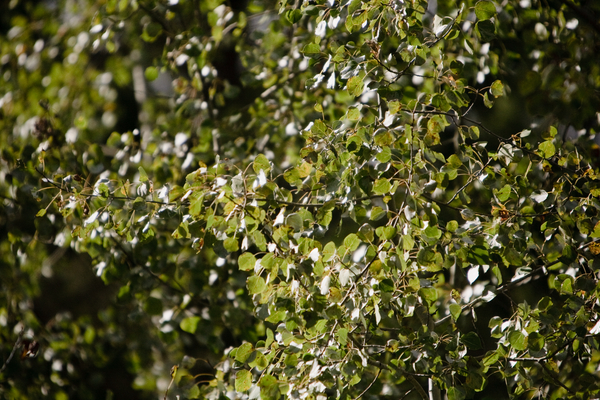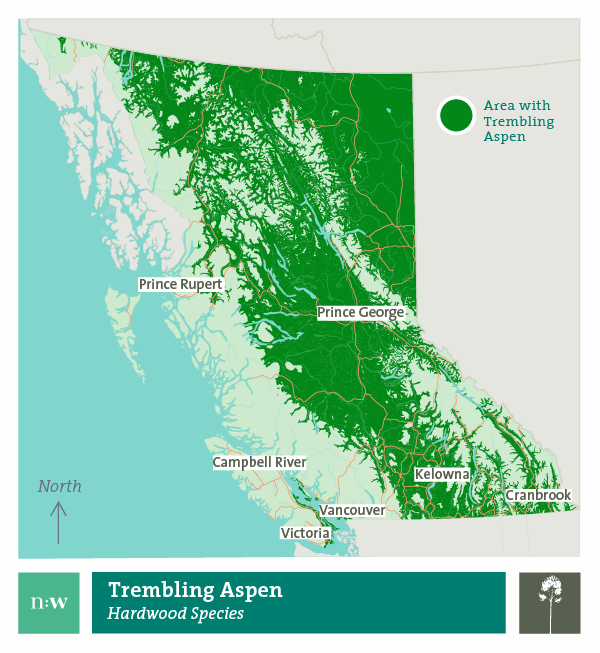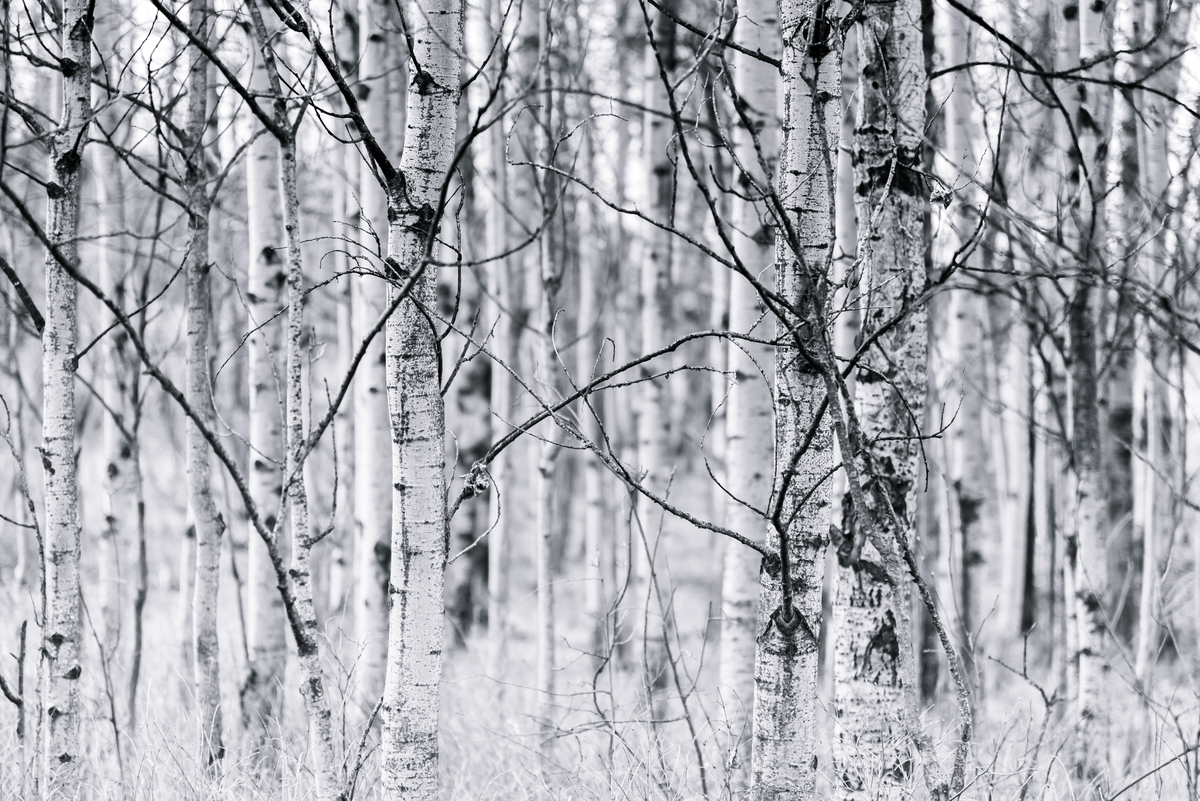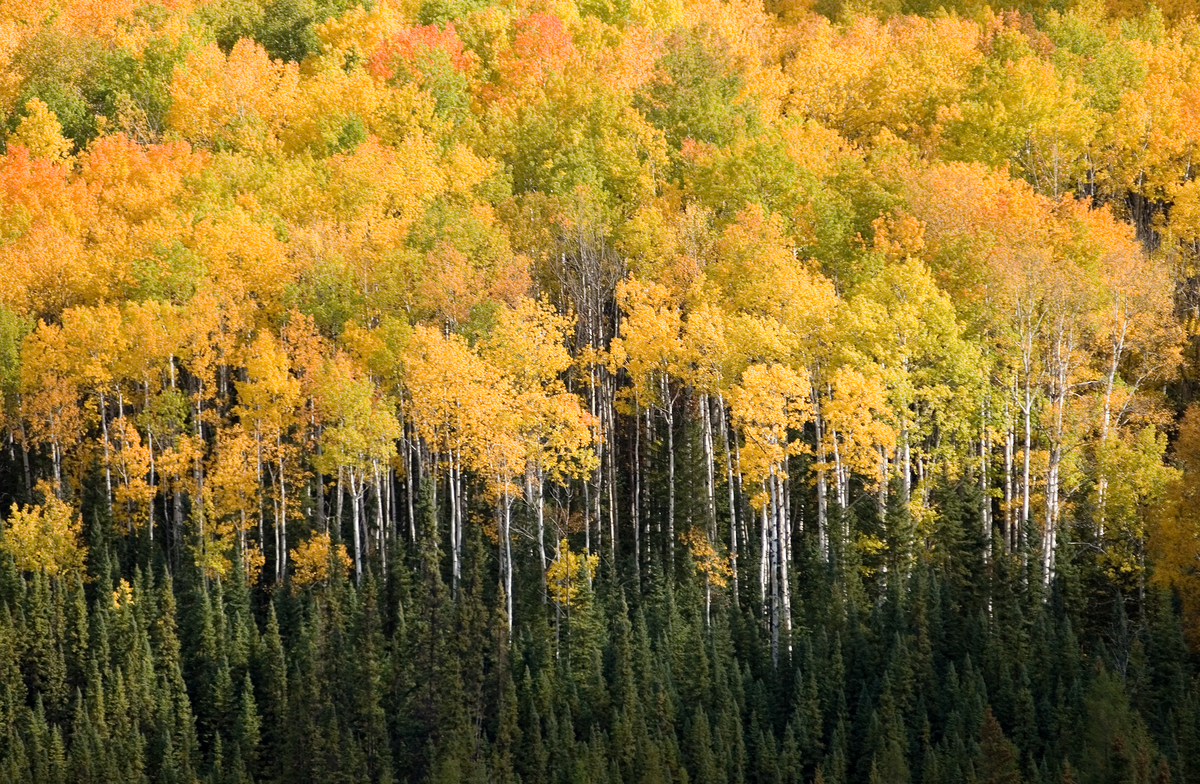Trembling aspen is a slender, graceful tree with smooth, greenish white bark and distinctive leaves that quiver in the slightest breeze, giving it its name.
Trembling aspen is the most common of the fast-growing, small-diameter species used to make oriented strand board (OSB) and laminated veneer lumber (LVL). Aspen has gained acceptance in the construction market as studs, and its bright white colour is well suited to appearance applications.
It is found throughout British Columbia (B.C.) east of the Coast Range.






